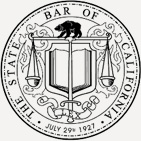
408-971-6270
How Small Partnerships End in California
 The California Corporations Code requires founders to follow specific procedures and file specific forms before the entity comes into existence. For example, articles of incorporation must be filed with the Secretary of State in order to create a corporation. In contrast, a general partnership can be formed without any document at all.
The California Corporations Code requires founders to follow specific procedures and file specific forms before the entity comes into existence. For example, articles of incorporation must be filed with the Secretary of State in order to create a corporation. In contrast, a general partnership can be formed without any document at all.
A partnership is formed when two or more individuals co-own a business for profit. Cal. Corp. § 16101 (9). No writing at all is required to form a partnership. However, written partnership agreements are often created by the partners and this article discusses one reason why a partnership agreement is important.
For example, Sallie and Juan open a bakery shop together in downtown San Jose. Sallie buys all the groceries, pays for them and hires the staff. Juan gets up early, bakes everything and stocks the display windows. Together Sallie and Juan help customers and man the cash register. At the end of each day, they split the proceeds after costs are paid. They are clearly doing business together in their San Jose bakery. Even without a written partnership agreement or the intent to form a partnership, they have.
However, one day Sallie tells Juan that she has to move out of state to care for an elderly relative. Sallie leaves San Jose for Reno the next day. Juan no longer has a partner.
Considering how easy it is to form partnership in California (even accidentally, since intent is not required either), it is important for a savvy business person to be informed about what will cause the partnership to end and what happens when it does end.
How Does A General Partnership End?
California Corporation Code Section 16801 lists six methods which it states are the only ways that a partnership may terminate. These methods are:
- the express will to dissolve the partnership;
- when a partnership is specifically designed to last for a certain period of time, when that time period ends;
- an event agreed to in the partnership agreement causes the partnership to end;
- the partnership becomes illegal;
- a partner applies to a court to the dissolve the partnership and a court determines the partnership should be dissolved; and
- after a partner transfers his or her interest and a judge determines it is fair to end the partnership.
Although this list is long, the ways to end a partnership largely center around the partners agreeing to end the partnership or a judge determining that the partnership should terminate. However, California cases have added another subtler way that a partnership can end. A partnership in California dissolves when the penultimate partner leaves. See Corrales v. Corrales, 198 Cal. App. 4th 221 (2011). (stating that when a partner withdrew from a two person partnership, the partnership “dissolved by operation of law; by definition, a partnership must consist of at least two persons §16101, subd.(9)”); Wheatley v. Fink, 2006 Cal. App. Unpub. LEXIS 9958 (2006) (holding that buyout provisions do not apply when one partner leaves a two-person partnership because the partnership could not be continued by a single partner).
This leaves partners in a two-person partnership in an ambiguous situation if they do not provide for it in their written partnership agreement. Without mechanisms in the partnership agreement, the default is that termination does not have to be mutual as either partner may leave at any time and the partnership ceases. This means that it is almost as easy to end a two-person partnership as it is to create one.
How does a partner dissolve a partnership?
Again the answer is straight-forward and comports with common-sense. California Corporation Code Section 16601 provides the methods by which a partner can “dissociate” or with withdraw from the partnership. The two most common ways for a partners to dissociate are: 1) the partner dies, or 2) the partner expresses to the rest of the partnership that he is leaving the partnership.
Normally when a partner leaves a partnership with multiple members remaining, the remaining partners can buy out the leaving partner’s interest. However, in a two-person partnership, when one partner leaves California Courts have held that the buyout provisions do not apply because the partnership no longer exists. Wheatley v. Fink, 2006 Cal. App. Unpub. LEXIS 9958 (2006) (Plaintiff was not entitled to equitable remedies as a dissociated partner because neither plaintiff nor defendant “could rightfully or wrongfully disassociate from the partnership because without each other there was no partnership.”) So as in our example above, when Sallie informed Juan she was leaving the state and then left the state, she clearly expressed that she was leaving the partnership. Juan without Sallie is not operating a general partnership as he is now a sole proprietor.
Now imagine that Sallie and Juan had a written agreement that said the partner had to give 60 days written notice, or that the agreement specified the value of the partnership interest and a buyout procedure. Perhaps that would have provided Juan sufficient time to bring in a new partner to buy out Sallie’s share.
Takeaway⇒ Small partnerships are require a written agreement as there are no laws in the Corporation Code to protect a business person abandoned by their partner. When you are drafting a partnership agreement, it is important to consider what will happen when that partnership ends, how the assets will be distributed and how the liabilities will be divided.
[1] Cal. Corp. Code § 16601. Events resulting in dissociation
A partner is dissociated from a partnership upon the occurrence of any of the following events:
(1) The partnership’s having notice of the partner’s express will to withdraw as a partner or on a later date specified by the partner.
(2) An event agreed to in the partnership agreement as causing the partner’s dissociation.
(3) The partner’s expulsion pursuant to the partnership agreement.
(4) The partner’s expulsion by the unanimous vote of the other partners if any of the following apply:
(A) It is unlawful to carry on the partnership business with that partner.
(B) There has been a transfer of all or substantially all of that partner’s transferable interest in the partnership, other than a transfer for security purposes, or a court order charging the partner’s interest, that has not been foreclosed.
(C) Within 90 days after the partnership notifies a corporate partner that it will be expelled because it has filed a certificate of dissolution or the equivalent, its charter has been revoked, or its right to conduct business has been suspended by the jurisdiction of its incorporation, there is no revocation of the certificate of dissolution or no reinstatement of its charter or its right to conduct business.
(D) A partnership, limited partnership, or limited liability company that is a partner has been dissolved and its business is being wound up.
(5) On application by the partnership or another partner, the partner’s expulsion by judicial determination because of any of the following:
(A) The partner engaged in wrongful conduct that adversely and materially affected the partnership business.
(B) The partner willfully or persistently committed a material breach of the partnership agreement or of a duty owed to the partnership or the other partners under Section 16404.
(C) The partner engaged in conduct relating to the partnership business that makes it not reasonably practicable to carry on the business in partnership with the partner.
(6) The partner’s act or failure to act in any of the following instances:
(A) By becoming a debtor in bankruptcy.
(B) By executing an assignment for the benefit of creditors.
(C) By seeking, consenting to, or acquiescing in the appointment of a trustee, receiver, or liquidator of that partner or of all or substantially all of that partner’s property.
(D) By failing, within 90 days after the appointment, to have vacated or stayed the appointment of a trustee, receiver, or liquidator of the partner or of all or substantially all of the partner’s property obtained without the partner’s consent or acquiescence, or failing within 90 days after the expiration of a stay to have the appointment vacated.
(7) In the case of a partner who is an individual, by any of the following:
(A) The partner’s death.
(B) The appointment of a guardian or general conservator for the partner.
Related Posts
By accepting you will be accessing a service provided by a third-party external to https://www.diemerwei.com/






